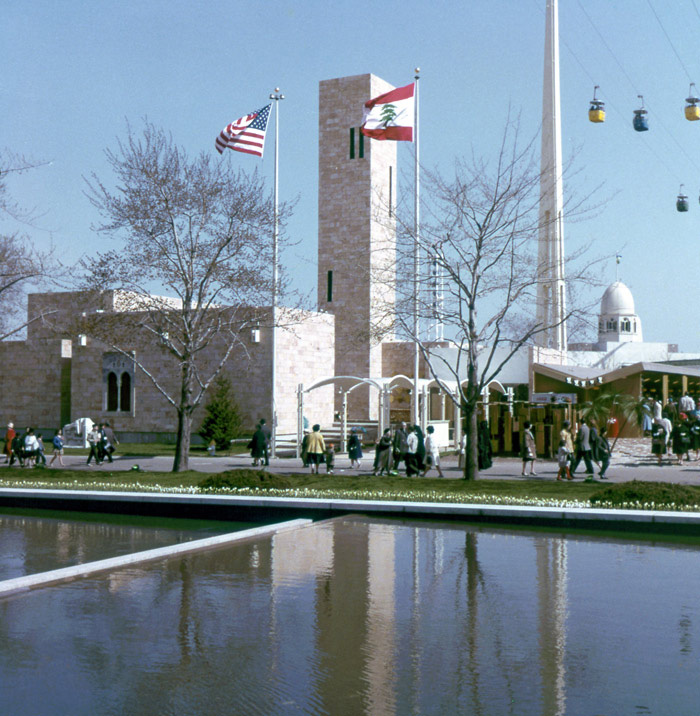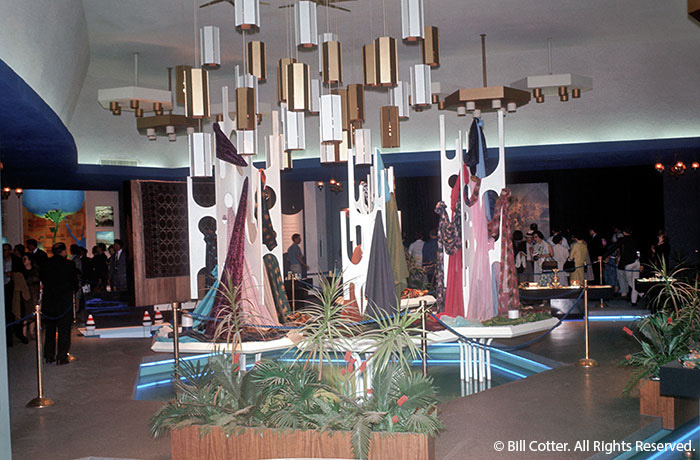Lebanon
The Lebanese, once known as the Canaanites and later the Phoenicians, have reached far into history for the exhibits and adornments of their pavilion. In the entranceway, 80-million-year-old fossils found in Lebanon are inset into a green onyx bas-relief map that shows the country's principal towns. The pavilion itself consists of a succession of cube-like structures grouped around an enclosed court - the whole much resembling the arrangement of houses in the tiny villages that dot the mountain slopes where the cedars of Lebanon grow. Rooms within the cubes trace the evolution of the alphabet, which originated with the Phoenicians, and show priceless relics of the nation's past, along with views of modern Lebanon. A bazaar selling souvenirs opens to the court, where the tables of a small restaurant are pleasantly shaded by olive and orange trees.

Despite being located near the Fair's central mall, the Lebanon pavilion doesn't show up in many photos. Perhaps that's due to the rather austere design of the building, which didn't feature much in the way of signage or other elements to attract potential visitors. (CD #4 Pana Vue 641M4)

The New With the Old. Displays in the largest room of the pavilion depict modern Lebanon's progress in public works and industry. In addition a striking Plexiglas map, showing the location of Lebanese settlements in other lands from 1000 B.C. to the present, is superimposed on a 48-foot-long photomontage of statuettes from antiquity. Also on exhibit is a replica of an outstanding example of Arabic architecture: a room from the 18 Century palace of Emir Bechir Shehab. (CD #49 Set 217 #12)
Want more information on the Lebanon pavilion?
8-15-63 - Groundbreaking booklet
